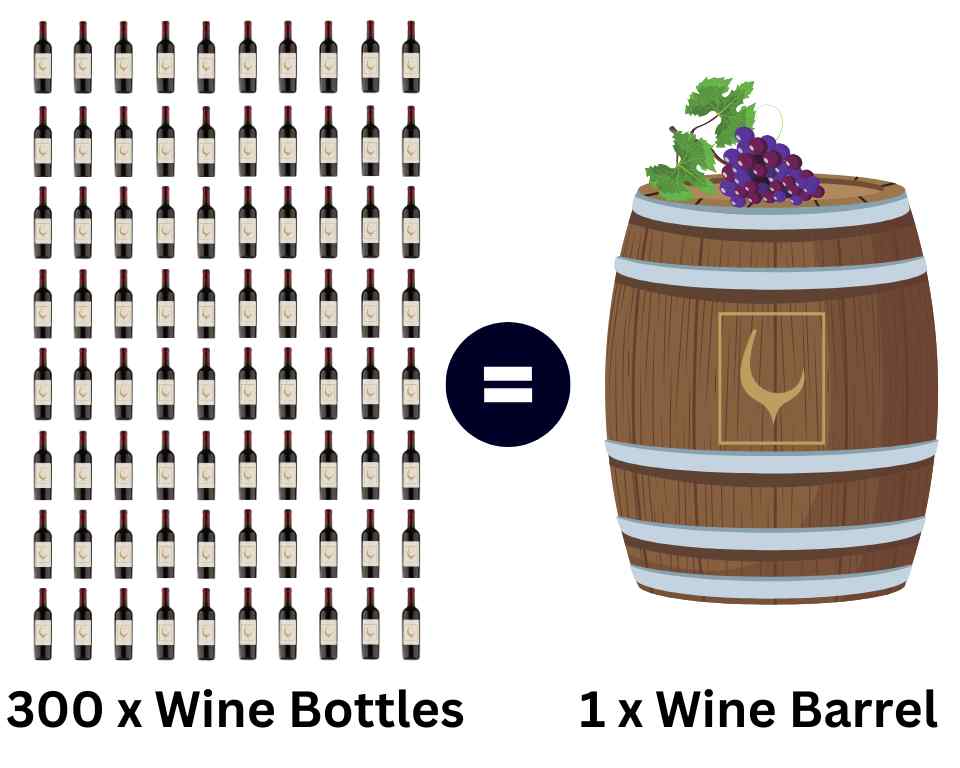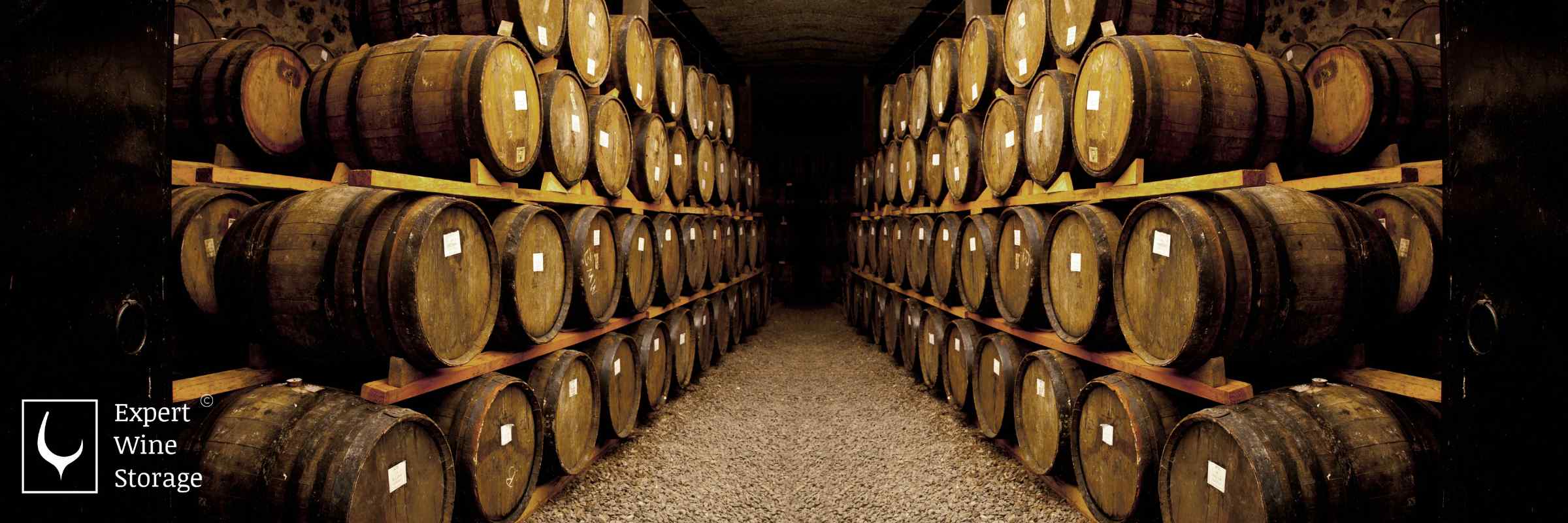You can get 300 bottles of wine from 1 wine barrel.
- A typical wine barrel holds 225 litres, or 59 gallons, of liquid.
- As a rule, barrels are consistently the same size across the wine industry, which comes in handy when answering these sorts of questions.
- A standard wine bottle is 750ml in capacity and therefore you can get 300 bottles (or 50 x 6 bottle cases) of wine from each barrel.
Here's all the details in an easy to read format:
1. Standard Bottle
- Capacity (ml): 750
- Bottles per Barrel: 300
2. Magnum Bottle
- Capacity (ml): 1500
- Bottles per Barrel: 150
3. Jeroboam Bottle
- Capacity (ml): 3000
- Bottles per Barrel: 75

How Many Cases of Wine In A Barrel?

A standard wine bottle is 750ml in capacity and therefore you can get 50 x 6 bottle cases or 25 x 6 bottle cases of wine from each barrel.
What are the Wine Bottle Sizes?
Whilst chances are that wine barrels are the same size, there are lots of different sizes of wine bottle and this can affect how many bottles you would get from a wine barrel.
The most common wine bottle size is 750ml and this is the size you would find in most stores and restaurants.
It helps to ensure consistency across the industry.
But sometimes 750ml just isn’t enough, and that’s when the bigger wine bottles come in.
- A magnum is the name for a bottle that holds 1.5 litres, or two bottles of wine. You would get 150 magnums out of 1 wine barrel.
- A jeroboam is twice that again. It holds 3 litres, or the equivalent of four bottles of wine. You would get 75 jeroboams out of 1 wine barrel.
These size bottles are great for parties and large gatherings, but remember a bigger bottle requires bigger storage space.
Why Are Wines Aged In Barrels?
Well before glass was invented wood was all the rage.
But wooden barrels weren’t just convenient, it turns out that ageing wine in barrels can help to mature the wine and develop lots of interesting tertiary flavours.
Ageing wine in barrels can also help to ensure a wine is suitable for long term storage and cellaring.
Most wines that are bought to age and develop over the years as investment bottles have seen some time in oak during their wine making process.
Oak helps to develop tannins in a wine which in turn give a wine structure for long term cellaring.
The larger the wine barrel, or the older the barrel, the less of an effect it will have on the wine inside.
And whilst barrels may be a similar size, there are lots of different ages and materials used to make them.
What Types of Wine Barrels Can You Get?
So now you know how many wine bottles you can get from a bottle, let's take a look at the different types of barrels you might see in a winery.
1. Oak barrels
Historically used for convenience, the merits of using oak in ageing wine means it’s still a common material in most modern day wineries.
Most oak barrels used in winemaking are made using French or American oak, although French oak is the more popular of the two.
Oak imparts lots of lovely flavours into a wine including perfumed vanilla and spicy clove.
2. Concrete barrels
Concrete barrels are porous, which means that oxygen can move through the material.
Oak works in a similar way so concrete is sometimes used as an alternative to wood in more eco conscious wineries, reducing the amount of timber needed.
Concrete barrels are great for slowly oxidising a wine without imparting too many “wooden” flavours.
Although some wines, such as Chardonnay, benefit from having oakier characteristics.
3. Clay barrels
Clay barrels are some of the oldest types of barrels and were frequently used in the most ancient examples of winemaking.
So old in fact that they predate oak and often go by the term vessel or pots, instead of barrels.
Using clay in winemaking allows the fruit to shine, and clay vessels often get used in a lot of natural wine production.
It’s worth noting that these pots will differ in size from traditional oak barrels.
4. Stainless Steel
Not a barrel per se, but stainless steel is used a lot in wineries for fermentation and ageing.
Using stainless steel creates lots of fruit forward wines, as no oxygen is able to reach the wine whilst it is ageing.
Having lots of different options for ageing, fermenting and storing wine makes for an interesting and varied wine industry - ensuring no wine is ever alike.
Before You Go...

We hope you enjoyed learning all about how many bottles of wine are in a barrel.
If you have any questions, leave them in the comments, or email us at info@expertwinestorage.co.uk
If you want to learn more about interesting wine info, consider our related blog posts: Wine Info
Expert Wine Storage can help you find a luxury wine fridge to store your precious wine collection.



 Author:
Author:
Leave a comment (all fields required)